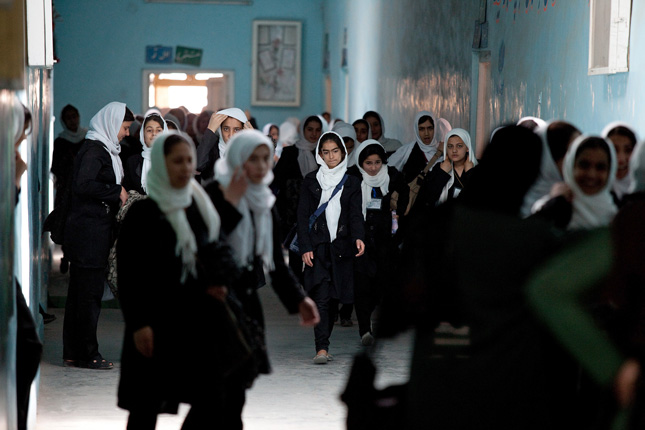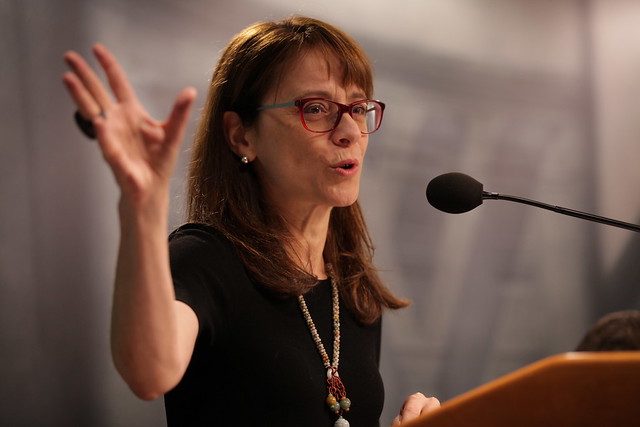“If we are serious about results, [the Sustainable Development Goals] must be developed from the perspective of the young person, particularly the adolescent girl. It is about her challenges, her rights, and her future.
Займ на карту онлайн. Our collective success begins and ends with her,” said Benoit Kalasa, director of the technical division for the United Nation’s Population Fund at the Wilson Center on
October 19.
[Video Below]
Prior to the adoption of the Millennium Development Goals (MDGs) by the United Nations in 2000, if aid was targeted by gender, it was likely for married women, said Francoise Girard, president of the
International Women’s Health Coalition. Unmarried women and young girls were left largely out of the picture. A new development paradigm has gained traction in recent years, however, which is the idea of putting “the girl at the center,” she said.
Young women are being recognized as crucial participants and leaders in development, and keys to transforming gender norms and underlying power structures.
But development practitioners and policymakers still have a great deal to learn about investing in adolescent girls, especially when it comes to sexual and reproductive health and rights, said Nicole Haberland, senior associate at the
Population Council, a research organization that works in more than 50 countries on HIV prevention.
“Resources are being poured into interventions, but not being evaluated,” Haberland said. The need for more accountability, driven by more and better data, is paramount, as is more creativity and innovation.
Fostering Safe Spaces to Demand Accountability
It’s very important to reach girls during adolescence, said Nyaradzayi Gumbonzvanda, a lawyer and general secretary of the
World Young Women’s Christian Association (World YWCA), a non-government youth organization active in more than 120 countries. “That is the age when they are transitioning from childhood to adulthood…there is increased responsibility and increased personal decision-making on many matters, including social issues.”
“Resources are being poured into interventions, but not being evaluated”
For decades, the YWCA has embraced the “safe spaces” approach as a model for empowerment. Physical places outside of the home and school are designated where adolescent girls and young women can meet and share information. YWCA staff provides health and relationship advice, access to services and technical expertise, and mentoring.
Most importantly, safe spaces create an environment conducive to critical dialogue and policy advocacy, said Gumbonzvanda. They provide a venue for demanding accountability from “faith and cultural leaders on sensitive and controversial issues” that affect young women, such as child abuse, rape, and genital mutilation.
The safe spaces method works within different cultural contexts but pushes for transformation as well by not allowing culture to be used as an excuse for criminal behavior, Gumbonzvanda said. Take child marriage, for example. “By calling it ‘child marriage’ we are masking the issues of power and control over the bodies of…little girls and therefore according them legal majority and adulthood when actually it’s an issue of abuse,” she said. “We rarely talk about the 15 million men who are abusing or raping these girls…what is their sense of accountability.”
Raising Expectations
If teenage girls are married or become pregnant, they usually drop out of school and may never return. They also face higher risks of HIV infection. Making it through this gauntlet is difficult given low expectations for girls in many places and pressure to conform to gender norms, said Girard.
The International Women’s Coalition was the first funder of the
Girls’ Power Initiative, a Nigerian non-profit youth organization that pioneered the “girl at the center” approach, said Girard.
The founders of the initiative first began thinking systematically about how women and girls are treated by society in Nigeria’s Cross River State in the 1990s. “There was low value of girls in society and in their community, very low expectations for girls, no sense that educating a girl was worth it, no sense of a future, [no] career path or job for them, an absence of power in the lives of these girls – power in the family, power in the community, power in sexual relationships – and gender norms that saw girls as basically expendable,” said Girard.
Gender norms saw girls as basically expendable
Much like the World YWCA, the Girls’ Power Initiative provides a place for young women to meet, discuss critical issues, and find mentors. Girls are grouped together by age, from 8 to 16 years old, and staff delivers tailored information that helps them develop critical attitudes toward unchallenged gender norms, social roles, and conceptions of sexuality. The initiative also reaches out to schools, providing lesson plans and teacher training so that girls who cannot travel to their centers still have the opportunity to learn and engage.
There are no quick wins, Girard said, but educating families about the value of keeping their daughters in school while countering low expectations is an important start.
The Potential Role of Technology
Digital technology is a potential game-changer for sexual and reproductive health and rights for its potential to deliver information directly to young people, said Bhupendra Sheoran, executive director of
Youth-Centered Health Design, a nonprofit tech startup based in Oakland, California.
Increasingly, “technology is emerging as a basic human need,” especially in developing countries, said Sheoran. Early on at Youth-Centered Health Design, he said they realized that “creating software for passive recipients wasn’t a good model…young people have the power and the right to make their own decisions – they’re not victims, they have agency.” That led to a fundamental shift in how they approached programming. The organization now has a youth advisory board that consults on all projects and incorporates feedback from young people at every stage of the development process.
A few notable apps aimed at young women take advantage of the location sensors and social hub function of mobile phones.
Circle of 6 helps prevent sexual harassment by making it easy for women to quickly and discreetly contact up to six trusted contacts.
HarassMap Egypt provides a way for women to report and share experiences of harassment in Egypt and find resources for help. These and other apps like them are fostering safe spaces online, said Sheoran.
Sheoran also shed light on some usage patterns. Most young men and women in developing countries connect to the internet through mobile phones, not through personal computers. And though women are using social media more than men, they are coming online more slowly and later than men, reflecting a broader inequity in agency and access to resources.

An Unsolved Puzzle
Many development initiatives focused on young girls have shown promise, but there is a tremendous amount of work to do, said Haberland. “Only 20 percent of low-income countries…have achieved gender parity in primary school and only 10 percent have achieved gender parity in secondary enrollment.”
The gender divide is even starker with respect to mobile phone usage. Among individuals who do not use a mobile phone, 81 percent are women, she said. If we ignore this divide and widespread illiteracy in places, “we risk passing over the most vulnerable without due attention to access,” she said.
Such a complex, multi-sectoral challenge as improving youth sexual and reproductive health and rights requires creativity, Gumbonzvanda said. NGOs should seek out “unusual partnerships” in their efforts to reach more people, like working with Silicon Valley.
Sheoran suggested embracing some of the tenets of the tech sector, pointing out that failure is considered normal, as long as your learn from it. “Fail quickly, fail early, fail often, and fail cheaply,” is a lesson that the development community could learn from, he said. An estimated
92 percent of all tech startups fail.
Girard reminded the audience that in looking to help girls and women, boys and men are important too. Young boys face narrow gender norms that shape their behavior and options as well – the idea that to be masculine is to be dominant and that conflict must be resolved through violence. These are clearly intertwined with those norms that affect girls and women. Educational efforts around sexual and reproductive health and rights in schools must reach both sexes.
Ensuring that young girls in developing countries reach their potential is the only way to achieve the SDGs, and sexual and reproductive health and rights are a critical part of that puzzle, said Kalasa.
“How can we expect results from our investments when the power and potential of so many girls around the world are perpetually undermined? How can the world tackle the most pressing development challenges when half the team is on the bench?”
Event Resources:

 A Publication of the Stimson Center.
A Publication of the Stimson Center.




